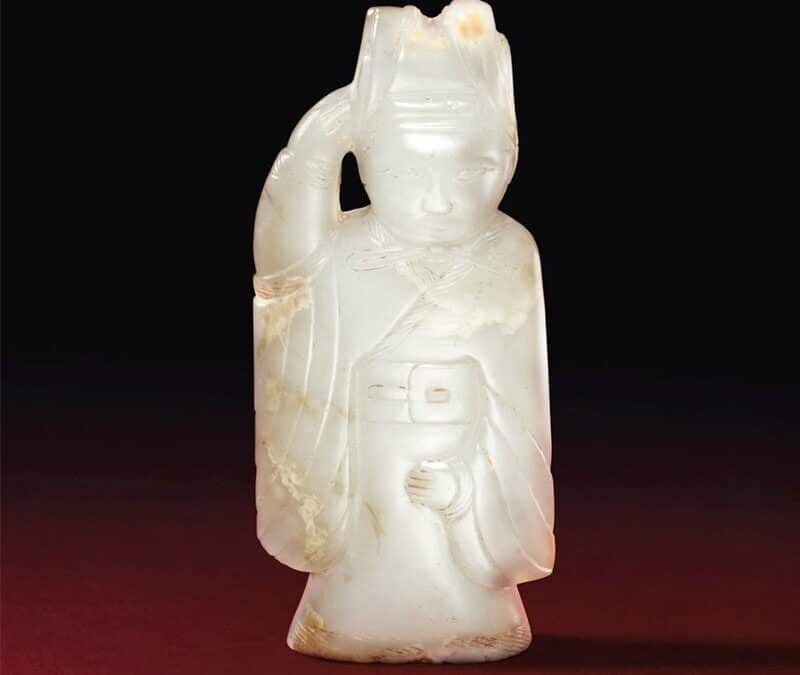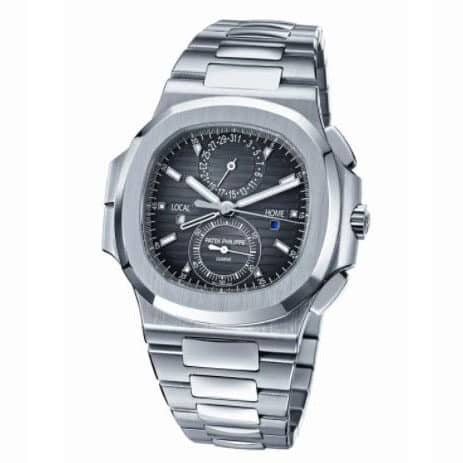Jade – The Stone of Heaven
Luminous green jadeite may best represent the current concept of jade, yet jadeite was not carved in China until after the late 1700s when it was shipped there from Myanmar (upper Burma). In truth, jade has many faces. Although jade is prized throughout the world, it is revered in China and references to it permeate Chinese culture. For over 6,000 millennia, stone prized as jade has been cherished for its purity, sensual beauty, endurance, and spiritual mysticism.
Yu (jade) is the term Chinese gave to stones with various jade-like features, such as nephrite, jadeite, and bowenite. However, most historical references to Chinese jade generally refer only to nephrite, which was abundant in China during the Neolithic period. Pure white nephrite is the preferred color, but the presence of iron compounds may cause nephrite to appear mottled, or green. Nephrite can also have variations of cream, yellow, brown, gray, or black. The two main types of jade, nephrite and jadeite are materially polycrystalline and formed from interlocking crystals, but nephrite has the denser more fibrous structure. In 1863, Alex Damour, a French mineralogist, researched the chemical composition of nephrite and jadeite finally proving that they are made from materials that are distinct from each other.
The Chinese Neolithic Period
Early Neolithic cave dwellers discovered jade embedded in rocks and boulders. Since the strength of jade compares favorably to that of hardened steel, it could only be painstakingly fashioned by abrasion and a repetitive drilling or grinding motion. Frederich Mohs’ hardness scale (1822), which measures the relative hardness of the various minerals with 1 being the softest and 10 being the hardest, places nephrite at a hardness rating of 6.5. Consequently, nephrite can only be abraded by minerals with a hardness rating above 6.5, such as quartz, topaz, corundum, or diamond. Although early workers in jade had only rudimentary tools at their disposal, they were able to painstakingly fashion the unyielding rock into tools and ritual objects.
The Neolithic Period in China began around 10,000 BCE and ended around 2070 BCE with the introduction of bronze metallurgy. As in other parts of the world, Neolithic settlements in China were most prevalent along river systems such as those along the Yangzi in southern and eastern China, and the Yellow River basin from Gansu Province in northwestern China to Hanan Province in central China. Both pottery and jade work emerged as artistic endeavors around 4000 BCE, as evidenced by artifacts from this period.
One group, the Yangshao of the central plain, made pottery by forming clay into coils and then smoothing it into desired shapes. The pottery found at their grave sites provides a record of early linear art enhanced with brush strokes of red and black pigments. Due to the challenge in carving recalcitrant stone with rudimentary tools, a proliferation of early jade pieces created were too large to wear and had little evident practical value, suggesting the carvings were made specifically for ceremonial use. Two examples are the flat round “bi” disk with a small round hole in the middle, and the “cong,” a tube with a square exterior and a hollow cylindrical interior. The bi and cong forms referenced the core cultural Chinese concepts of the square “yin” concept of earth and female, and the circular “yang” concept of heaven and male. Their appearance on sacred altars as symbols of power and status confirms their cultural significance. Bi and cong jade figures remained prevalent in China through the 20th century.
As early as the middle Neolithic period (70000-5000 BCE) there were three large jade producing areas in China: one in the Liao River basin, one in the Plains of the lower Yangtze River, and one in the middle Yellow River area. The evolution of jade carving mirrors the evolution of Chinese civilization from that of a hunter-gatherer society to one of localized farming with a more established societal hierarchy. Fine jade carving became more possible with the inception of a rotary machine for carving (3500 BCE). The innovative machine allowed the artisan to sit and place the jade against a grinding tool. The grinding tool would either be rotated by the artisan’s other hand, or by another person. This new machine was a huge step in the process of carving Neolithic jade.
After 2500 BCE, both the Longshan and Liangzhu cultures produced advanced round and arc-shaped jade pendants and necklaces and bracelets with animal forms. They also produced ceremonial axes and blades. Jade “yueh” axes were symbolic of the power of the shamans who used ritually carved Pi and ts’ung as symbols of heaven and earth to determine the will of heaven and be in harmony with it. A Pi disc from the Liang-chu displays a Sun Bird totem representing the tribes in the lower Yangtze River Valley. Pi discs often depicted spirit animals such as the dragon, tiger, and phoenix. Although there is no written record of the Liangzhu, the quality and proliferation of jade articles in their tombs shows the value they placed on their jade possessions.
A Few Thoughts on the Value of Jade
Jade is purported to enhance clarity, bestow health and good fortune, and provide access to the spiritual world, while averting bad luck and evil. Jade was the preferred stone of the Chinese emperors (2070 – 256 BCE) who used jade tablets called “Gui” for power and supernatural communication. Although the intrinsic value of jade starts with its rich cultural heritage and the innate attributes of the stone itself, other factors such as the quality of the carving and finishing processes also add to the value of the piece. Jade is beautiful, collectable, durable and alluring, with rich tantalizing color variations and wonderful textures.
If people are interested in adding jade pieces like these to their private collections, they can get started by checking with auction houses in Dania Beach, FL. These auction experts are happy to help collectors find pieces they desire that may soon be offered in upcoming auctions.
Selling Jade Pieces?
Do you have works made in Jade that you are interested in selling, appraising, or consigning? Call Joshua Kodner today, and ensure you receive the true value of your property.





